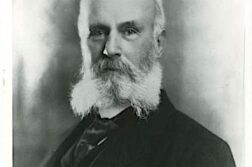NOVEMBER 1978 MARKS the thirtieth anniversary of the defeat of Proposition Six, the infamous Briggs Initiative, in California, which would have barred lesbians and gay men from teaching in state public schools. The victory for gay rights advocates came after a string of stunning defeats in referendum battles to repeal local gay rights laws that started in Miami in June 1977 and continued into the spring of 1978, reaching to St. Paul, Minnesota, Wichita, Kansas, and Eugene, Oregon. For lesbians and gay men, these campaigns were an emotional rollercoaster of despair and elation. For the rest of America, these referendum battles received nationwide media coverage and produced the first nationwide debate about gay rights in the U.S. The anti-gay campaigns of 1977–78 live on in the memory of many lesbians and gay men to this day. For many, these events marked their first involvement in political activism, whether it was working in one of the various campaign efforts, protesting against Anita Bryant, donating money to a gay rights organization, or simply not drinking orange juice.
It can also be said that these campaigns marked the beginning of a national lesbian and gay political movement. While previously a number of politically active lesbian and gay communities existed across the country, there was little connection among them. The National Gay Task Force, then the only national gay political organization, had a membership in the low four figures. The only viable national lesbian and gay organization was the Metropolitan Community Church. The only publication reaching a national lesbian and gay audience was David Goodstein’s The Advocate. Most lesbians and gay men were still in the closet. The Briggs–era campaigns made lesbians and gay men aware that they were, in fact, a national community with a separate identity and a political capability. From the energies that were created in these campaigns came the first national lesbian and gay march in Washington, D.C., in October 1979, which drew over 75,000 GLBT people from all parts of the country.






